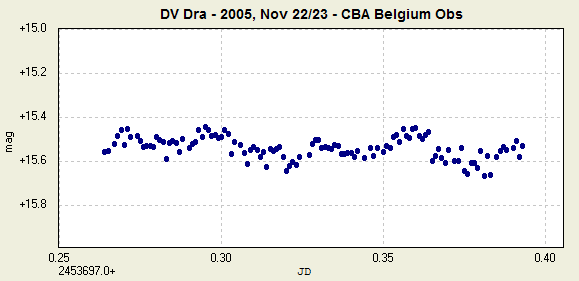Patrick Schmeer, Germany reported his detection of a
very rare outburst of the dwarf nova DV Dra on 2005,
Nov 22nd, using the University of Iowa 0.37-m Rigel
Telescope. The object was seen at mag 15.1 CR, while
3 nights earlier it was still below mag 18.0. The
outburst was independently observed by Tim Parson,
Forest Lake, MN.
Schmeer's observation is only the second recorded
outburst of DV Dra. Its first one was a
superoutburst in June 1984, when the star reached
photographic magnitude 15.1 (IBVS No. 3626). No
outbursts are recorded in the AAVSO International
Database since DV Dra was added in 1994.
Detection of early superhumps at CBA Belgium
Observatory
I started an unfiltered CCD photometry session on
DV Dra at 18h20m UT, Nov 22, 2005, using a 0.35-m
f/6.3 telescope and ST-7XME CCD. The session lasted
for nearly 200 minutes and had to be interrupted
because of clouds.
